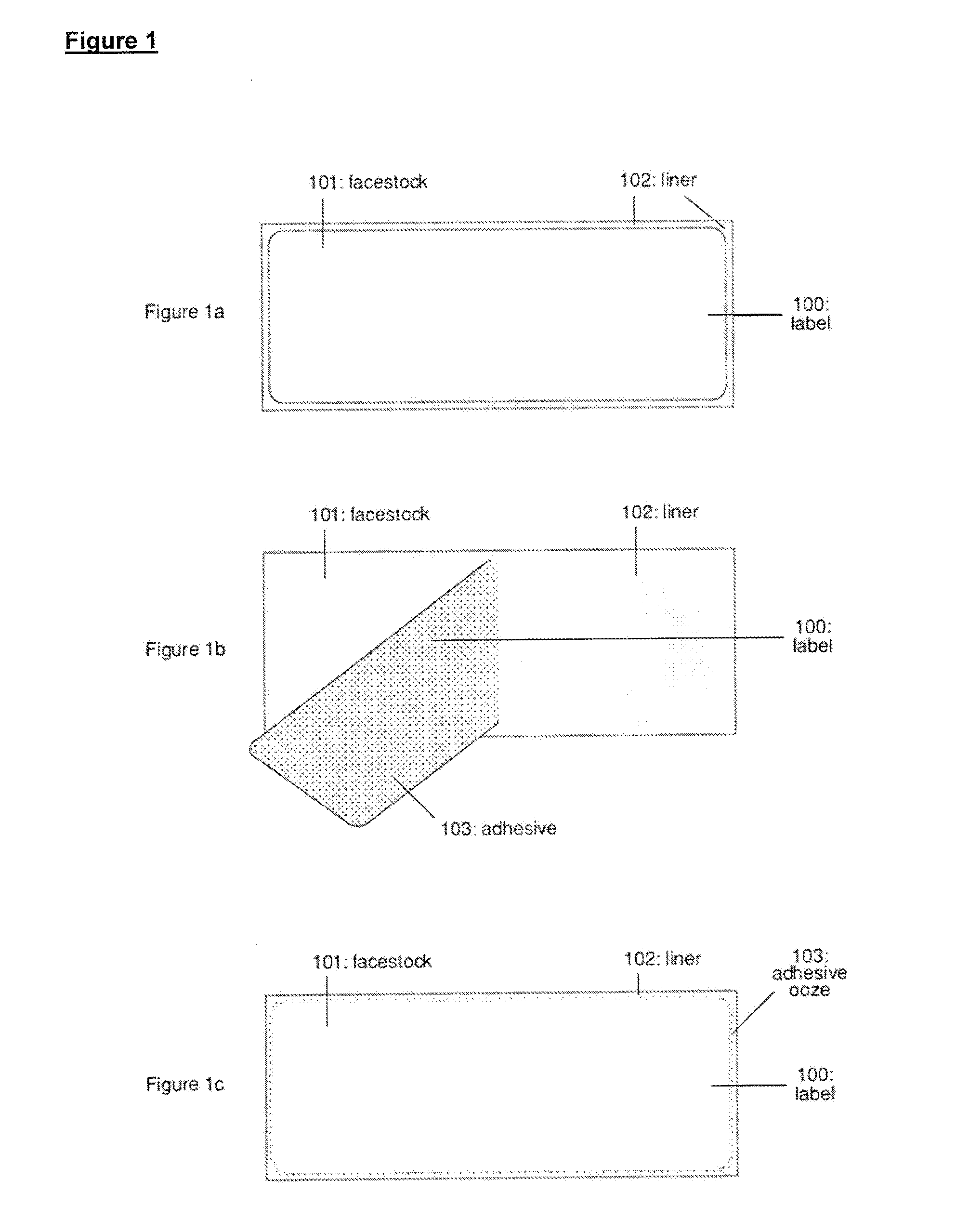Due to the viscous nature of the pressure-sensitive adhesives, pressure-sensitive labels which use these adhesives are considered “soft” or susceptible to “spreading” out (i.e. oozing) when pressure is applied or when subject to heat.
It is well known in the industry that 1) rubber based adhesives, especially those with heavier coat weight, are prone to oozing; and 2) freezer grade and / or all temperature adhesives which arc designed to work at cold temperatures, typically can have oozing problems at higher temperatures, especially when they arc a heavier than normal coat weight.
Even regular / standard
acrylic adhesive used in high temperature environments like
laser printers, can result in an oozing problem.
Non-ooze adhesive may be obtained from suppliers such as Mactac, to address this problem, though their ooze guarantee is limited.
In some label applications, holes are
cut through both the facestock and liner at the same location, resulting in ooze
exposure to both the top and bottom of the label.
thermal transfer printers, direct thermal printers, ink jet printers,
laser printers,
dot matrix and / or line printers) can induce mechanical problems when the adhesive oozes.
Further, label substrate is often made with a “heavy coat weight” of adhesive for difficult-to-adhere applications.
The heavier coat weight of adhesive adds to the potential for oozing.
Oozing may also result from rewinding labels into finished size rolls too tightly.
The heat will soften the adhesive and cause oozing.
If the adhesive has oozed out around the die
cut area on the facestock, labels on the second sheet in the stack could prematurely release when stuck to the back of the first sheet.
As the first sheet is advanced along the feed path, the pre-released label stuck to the back will stick to the first available surface in the feed path resulting in a paper jam resulting in printer stoppage and possible printer damage.
Similarly, adhesive ooze can occur through slits on the backside of the liner resulting in adhesive
exposure on the liner side.
When the top sheet is advanced in the printer, the exposed adhesive may pull a label off the facestock of the next sheet in the stack, resulting in exposed adhesive.
Adhesive that comes in contact with hot fuser rollers in
laser printers can permanently damage the fuser roller resulting in costly parts replacement and printer down time.
Adhesive “debris” that is left along the feed path of the label through a printer can leave an adhesive path throughout the printer causing
feeding problems such as jamming.
Such adhesive debris can build up and eventually be pulled along the printer path by the label or documents being fed through for printing.
Such issues may occur with every type of printer that may be used for printing labels, such as
thermal transfer printers, direct thermal printers, ink jet printers, laser printers,
dot matrix and / or line printers.
Adhesive ooze debris that ends up on the surface of the facestock may also
impact the quality of the print image made by the printer.
If adhesive ooze is significant, labels may pre-dispense in the unwind process, exposing the entire adhesive area resulting in labels sticking to the first available surface in the feed path.
This will cause a paper jam resulting in printer stoppage.
If the adhesive ooze does not result in a pre-dispensed label, the label could proceed through the feed path and come in contact with the hot surface of the print-head resulting in print-head damage.
 Login to view more
Login to view more  Login to view more
Login to view more 


